Installing Linux + (Nginx + Apache) + PostgreSQL + PHP Server on VirtualBox (Ubuntu Server 16.04.3 LTS)
On the Internet, I did not find a single recipe for installing and configuring such a rather non-standard server. I decided to write my recipe.
The principle of operation is as follows:

Nginx gives static data (files), and Apache does the dynamics.
Let's get started.
We need:
VirtualBox
Ubuntu Server 16.04.3 LTS (LTS - Long Time Support)
PuTTY
Let's go into superuser mode.
Let's go to the root directory.
Add a PostgreSQL repository.
Add a PHP repository.
Make an update.
Make an upgrade
. I upgrade took five minutes.
We will
install python, we will need it later. Let's proceed with the installation of Apache, PHP and PostgreSQL.
By default, PostgreSQL does not have single-byte and unsigned numbers, so we will install them.
There is an extension for PostgreSQL, pguint - github.com/petere/pguint
Let's go to the created directory
Now we need to compile this extension (here we will need the python that we installed earlier).
Now, to the PostgreSQL server, in the desired database, where we want to use unsigned and single-byte numbers, we will send:
Let's go back to the root directory.
Install Nginx, but before that we stop Apache so that it does not occupy port 80, otherwise Nginx will not install.
Installing Nginx
Great, now stop Nginx as well
Configuring Apache Change the Apache port Replace
on the
127.0.0.1 - means that Apache can be accessed only at the local address.
8080 - you can put any free port.
Let's go to the folder with available sites.
Create a configuration file for our sideboard
and bring it to this form:
Let's see what we have in / var / www The html folder, we no longer need it, delete it together with the contents Let's create our own folder, with our website Let's go to the folder with our website Let's create the index.pnp document We will write to it:
We are done with this for now.
Let's go back to the root directory
. Apache has rpaf 0.6 and it does not transmit / receive a port from nginx and does not work correctly, as it should. Therefore, it must be updated. Now we will compile. We leave in the root directory Well, we will continue the Apache setup. Replace
on the
Put in order rpaf.conf
Let's bring it to this form:
We will enable our site in Apache.
And run our Apache.
C Apache finished.
Configure Nginx
Bring it to this view:
Now create a symbolic link to this file.
Edit / etc / nginx / sites-available / default.
Remove the default_server.
And insert the redirection from www. and ip
We start Nginx.
Great, we can check how it works.
But before that, edit the host file C: \ Windows \ System32 \ drivers \ etc
Open the hosts file through a text editor, and insert at the very bottom: Replace ip and domain with your own. In the browser, we ’ll go to domain-name.local , and if you did everything according to this recipe, we should see a page with phpinfo. Well, the matter is left to the small. Set up PostgreSQL. Create a new PostgreSQL user. Log in to the DBMS and change the password for the new user. Now the new user needs to change the connection type, for this we need to find the pg_hba.conf file. We write

We leave the DBMS
and start editing /etc/postgresql/10/main/pg_hba.conf
We are looking for
Find the following: We will look like this: Restart PostgreSQL Now we will enter the DBMS through a new user Enter the password and go to the DBMS. Create a test database
And immediately go into it.
Connect the pguint extension
And create a test pattern
Fill the table with test data
Let's see the contents of the test_tb table
Now let's try to get this data out of php.
Close the connection to the DBMS
Open /var/www/domain-name.local/index.php
And bring it to the following form:
Now let's check and make sure that it works.
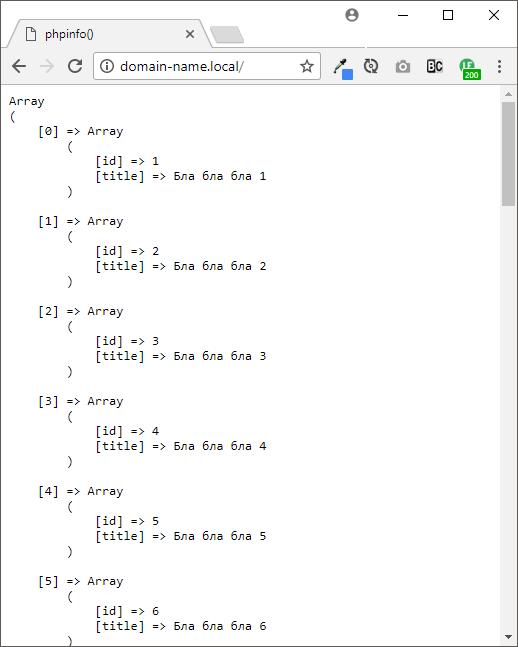
Great, we have configured (Nginx + Apache) + PostgreSQL + PHP and it works properly.
Install the FTP server.
Stop vsftpd before configuration.
Open etc / vsftpd.conf.
Install / replace / switch the following parameters:
Создадим нового пользователя для доступа через FTP
Установим для него пароль
Создадим домашнюю директорию пользователя
Установим для нее права
Создадим группу для пользователя
Добавим пользователя в группу
Поменяем владельца каталога
Создадим папку нашего сайта
Сменим у нее владельца
Смонтируем наши каталоги, откроем файл /etc/fstab
В самый низ вставим
Добавим владельца /var/www/domain-name.local
Назначим права
И запустим vsftpd
Проверим, я буду использовать FileZilla.

Все хорошо, попробуем создать каталог.

Работает.
Настроим защищенное FTP соединение.
Остановим vsftpd
Сгенерируем сертификат
Here we introduce everything that your soul wants
Open etc / vsftpd.conf
Install / add the following parameters:
Save and run vsftpd
Let's try

ur, everything works, you can start developing a web application.
PS This recipe does not claim to be the only correct and ideal. If you missed something or you have suggestions for supplementing this recipe, welcome to comments, I will accept any criticism. As my skills grow, this recipe will be supplemented and modified.
The principle of operation is as follows:

Nginx gives static data (files), and Apache does the dynamics.
Let's get started.
We need:
VirtualBox
Ubuntu Server 16.04.3 LTS (LTS - Long Time Support)
PuTTY
Install VirtualBox
- Run the VirtualBox installer.
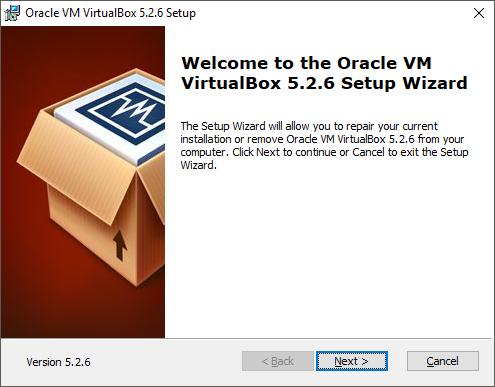
- Leave the default settings.

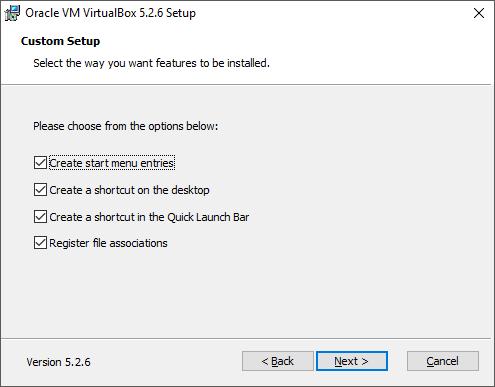
- The installer will temporarily disconnect us from the network. Click "Yes."
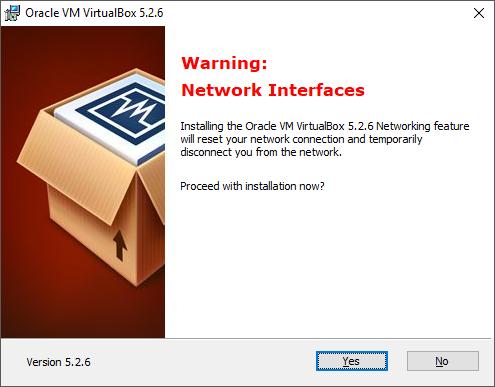
- We begin the installation.
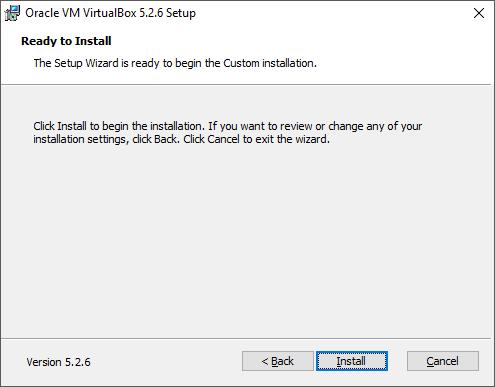
- Finish.
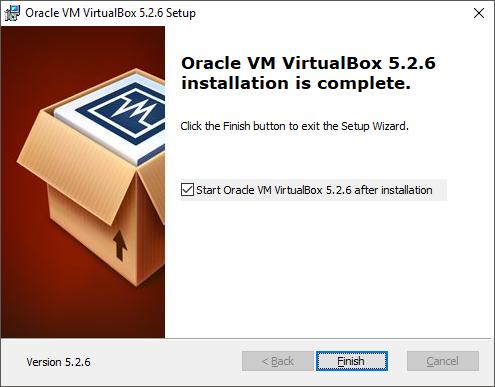
Prepare VirtualBox for Ubuntu Server 16.04.3 LTS Installation
- Download the ubuntu-16.04.3-server-amd64.iso image
- Create a virtual machine.
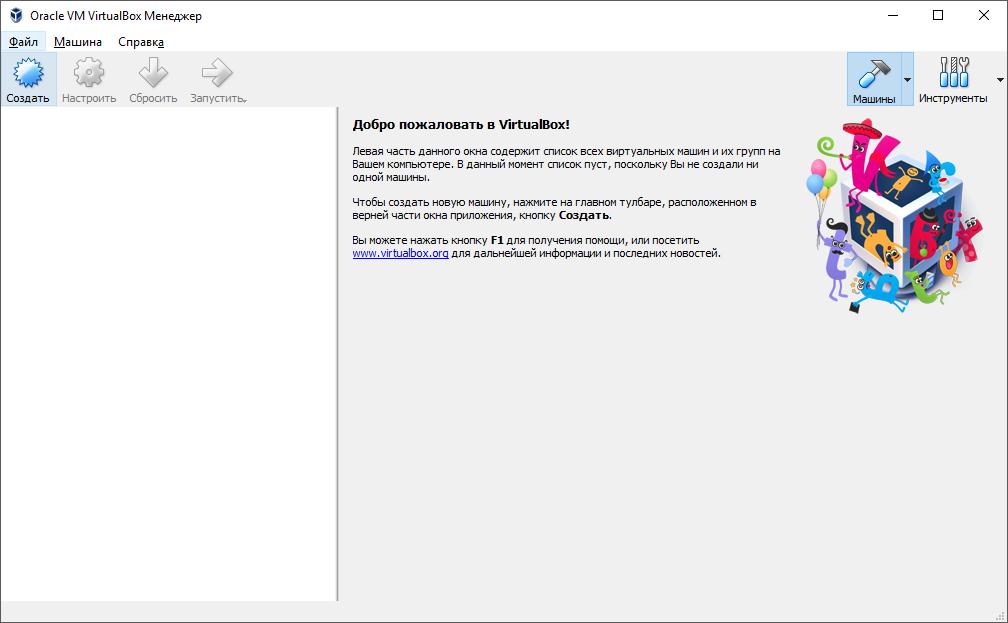
- Name: default_server
Type: Linux
Version: Ubuntu (64-bit)
RAM: 2048 MBImportant: I have 8 GB of RAM, and in my case, two gigabytes will be enough. Yours may be different ...

Hard disk size: 15 GB
Other parameters will be left by default.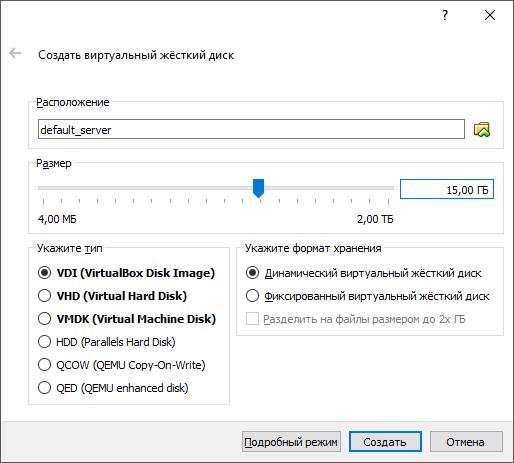
Click "Create." - Immediately configure the network.
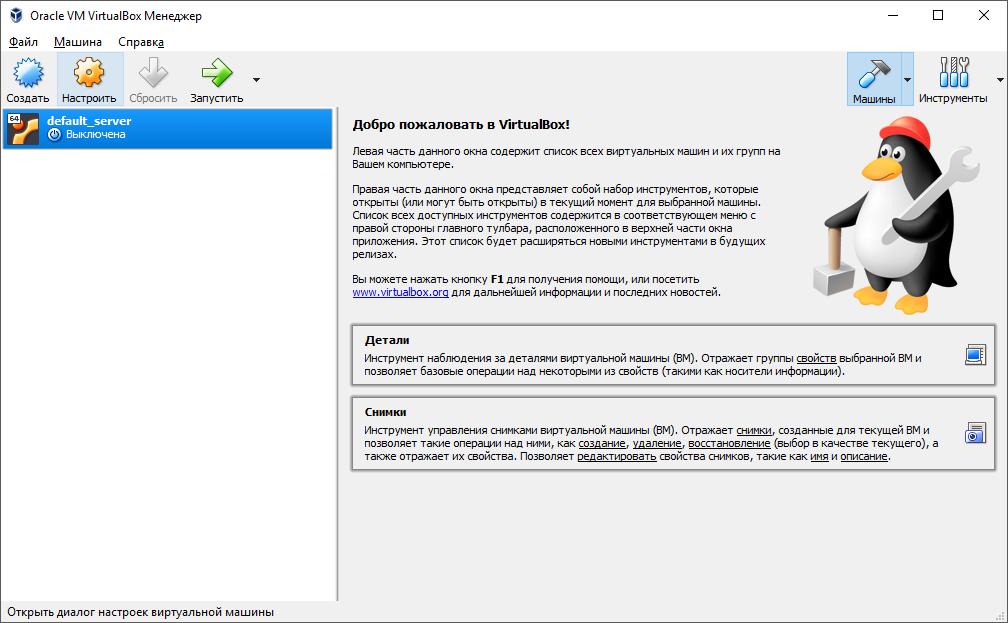
Change the connection type from NAT to Network Bridge.
In the future, we will not deal with port forwarding. - We start our car.
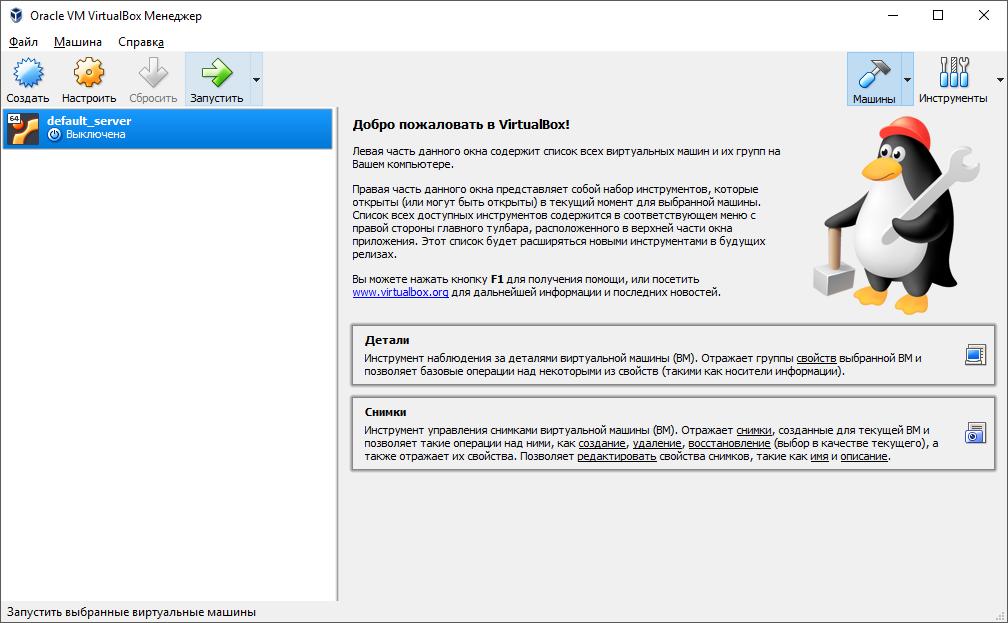
Install Ubuntu Server 16.04.3 LTS
- Select the boot disk with the Ubuntu Server 16.04.3 LTS image.

- We choose a convenient language, I have Russian.
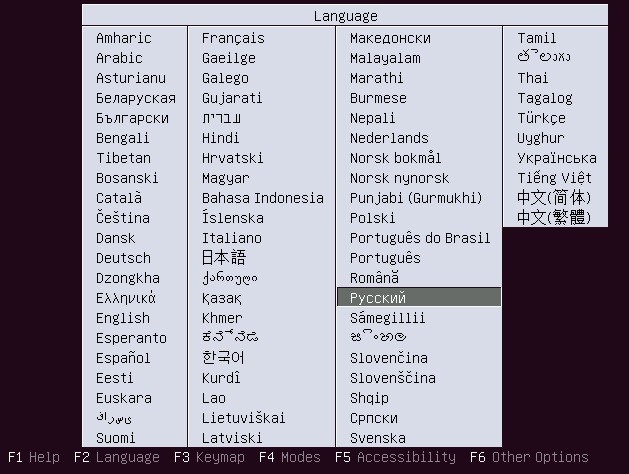
Click "Enter." - Select "Install Ubuntu Server."

- Choose a country.
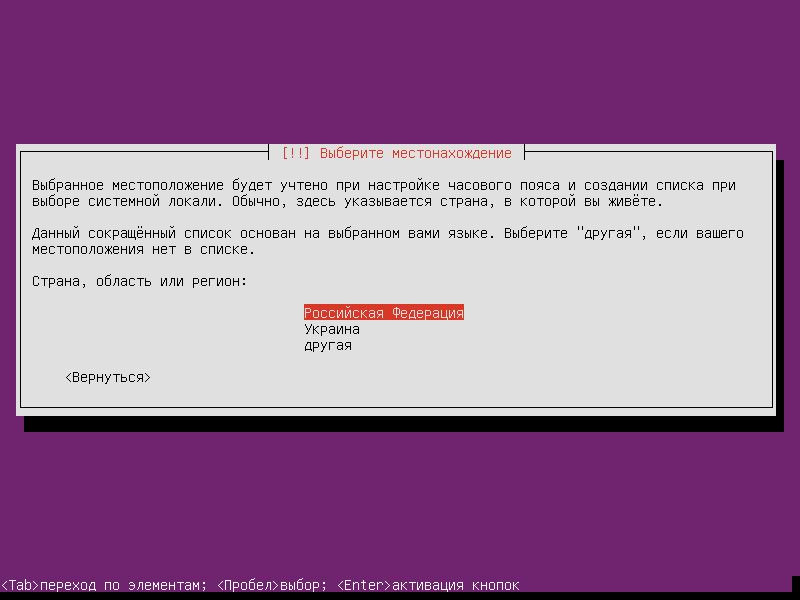
Important: Read the prompt at the bottom of the screen.
- I will not determine the keyboard layout, I do not need this.
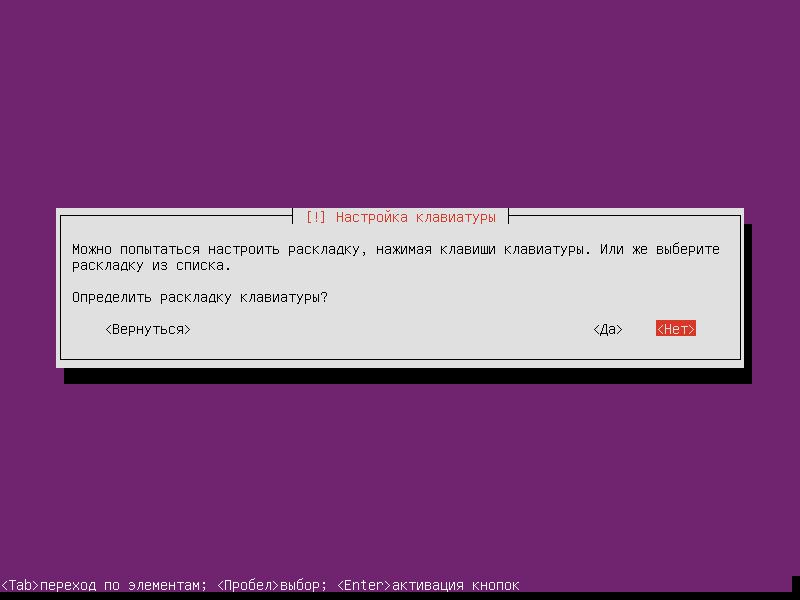
- We select the country for which the keyboard is intended.
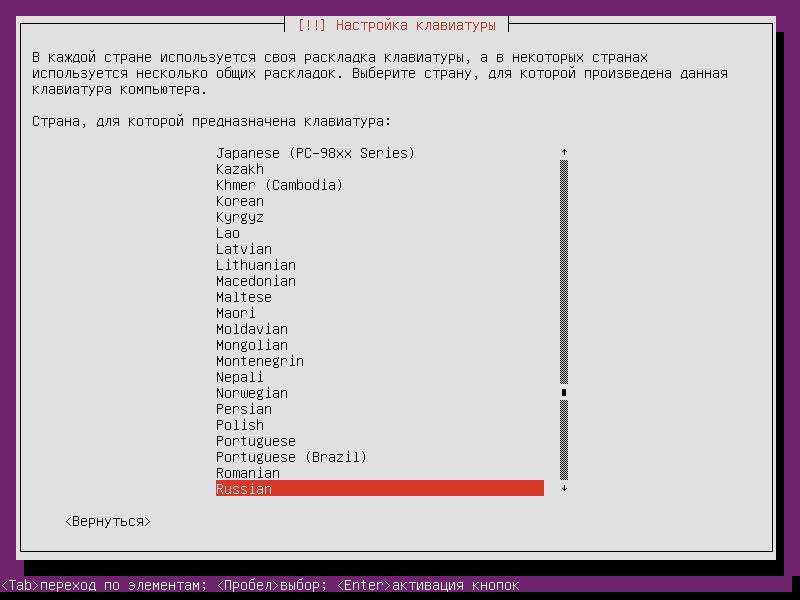
- Choose the layout region.
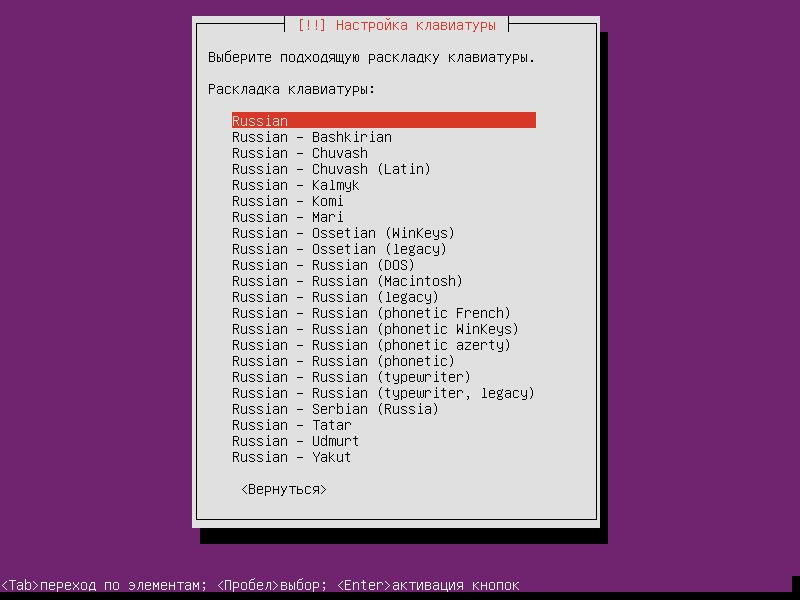
- Select a key combination to switch the language. I am comfortable using CTRL +
SHIFT.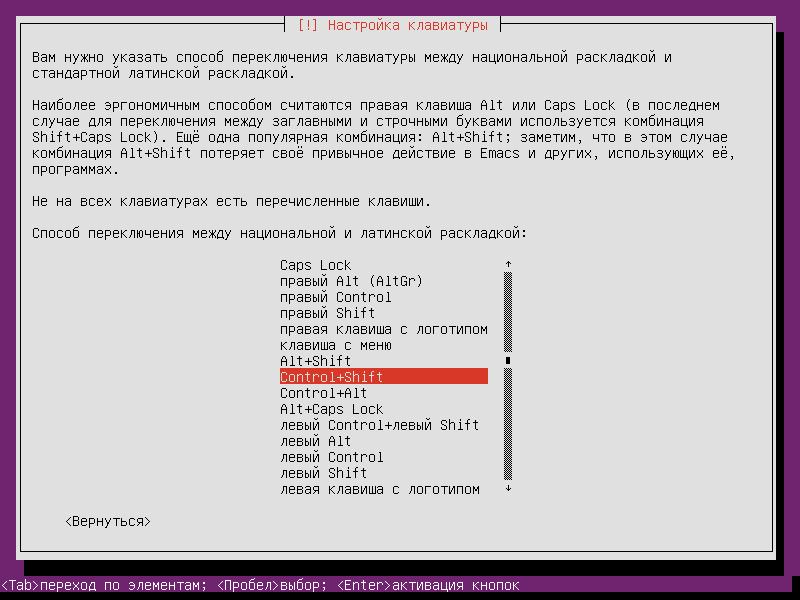
- Enter the name of the computer by which it will be known on the network.

- Enter the name of the admin.
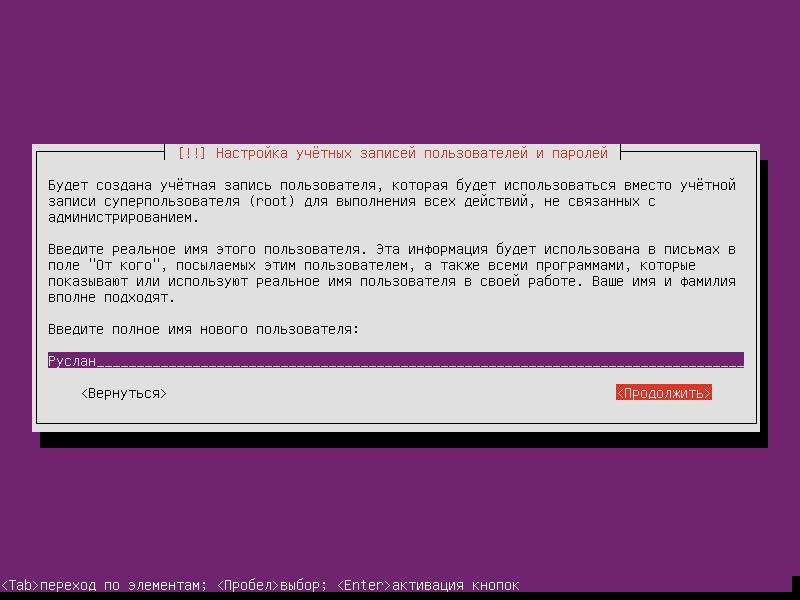
- Enter the name of the administrator account (It will be used as a login to enter the system).
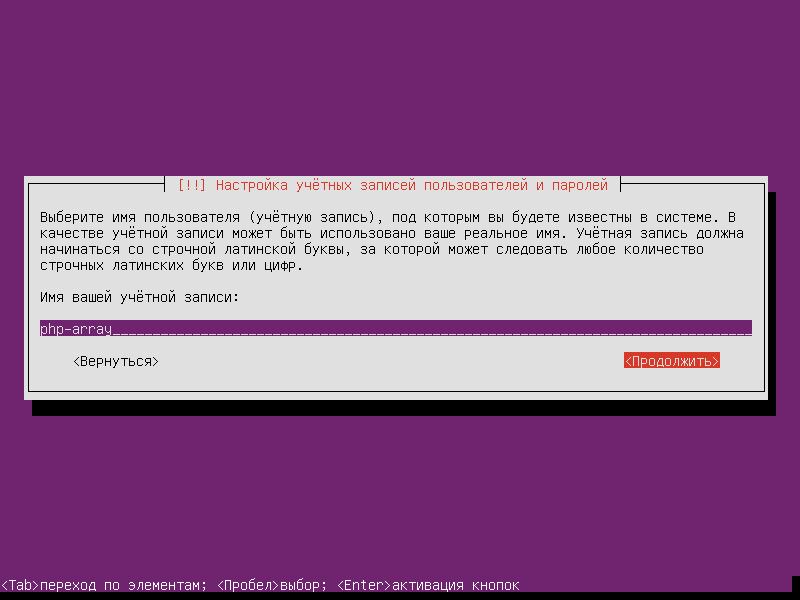
- Enter the password for the admin account.
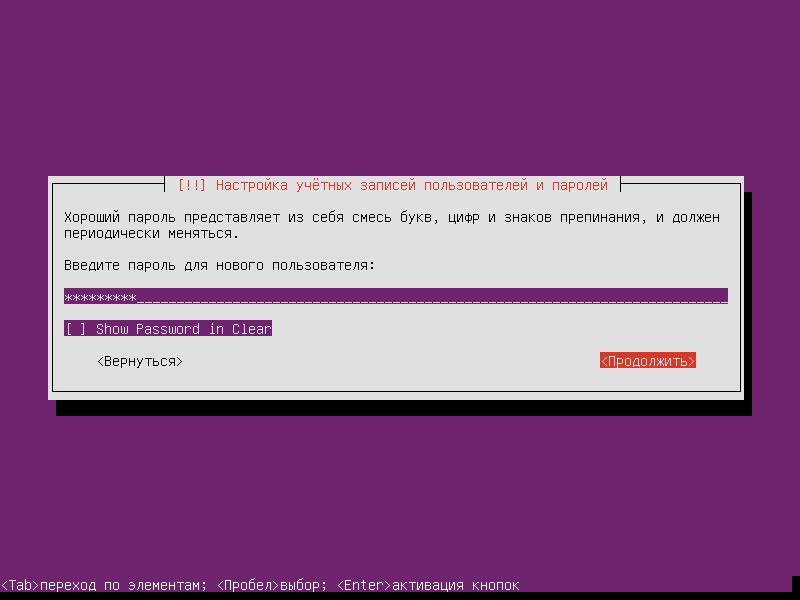
- We repeat the password.
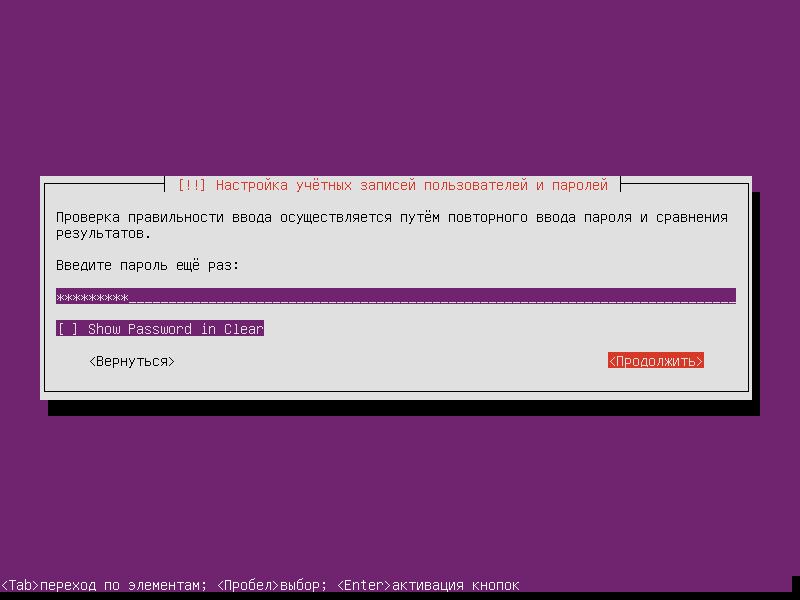
- Why not..?
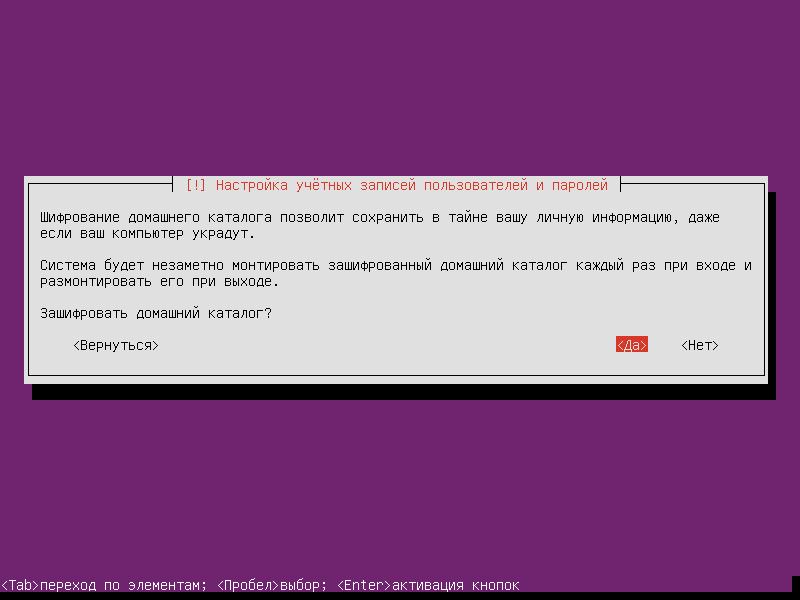
- Choose a time zone.
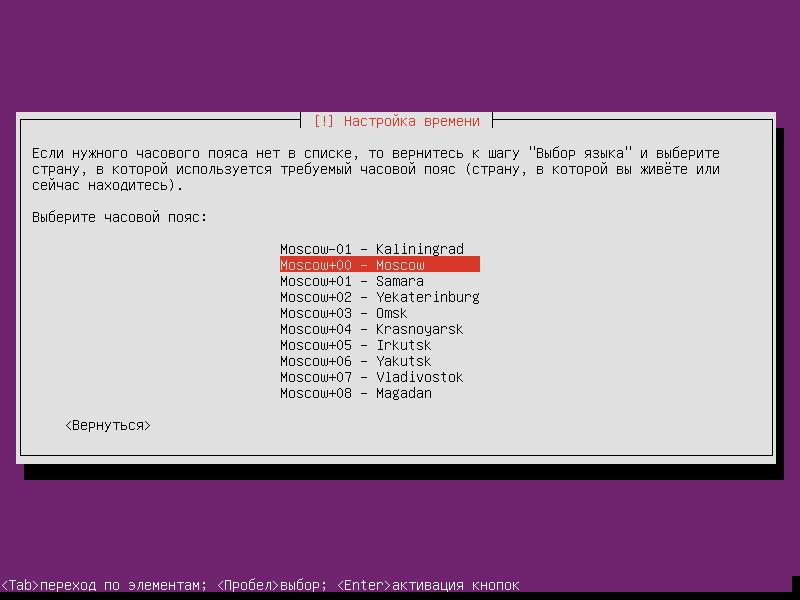
- Let the system automatically use the entire disk.
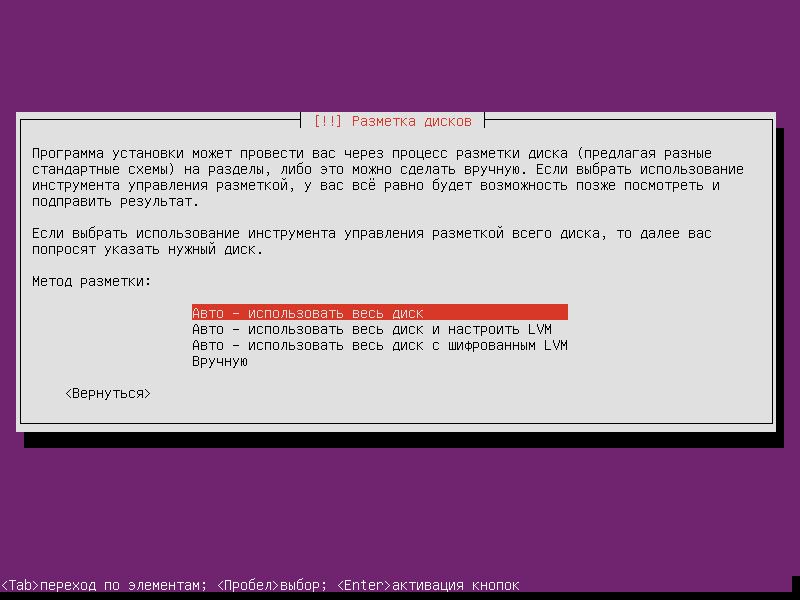
- Partition disk, select by default.
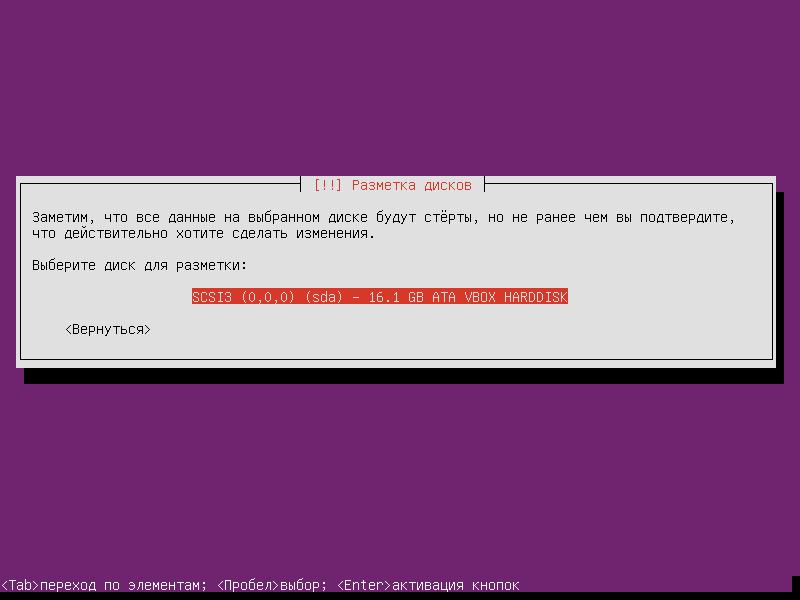
- We write the changes to disk.
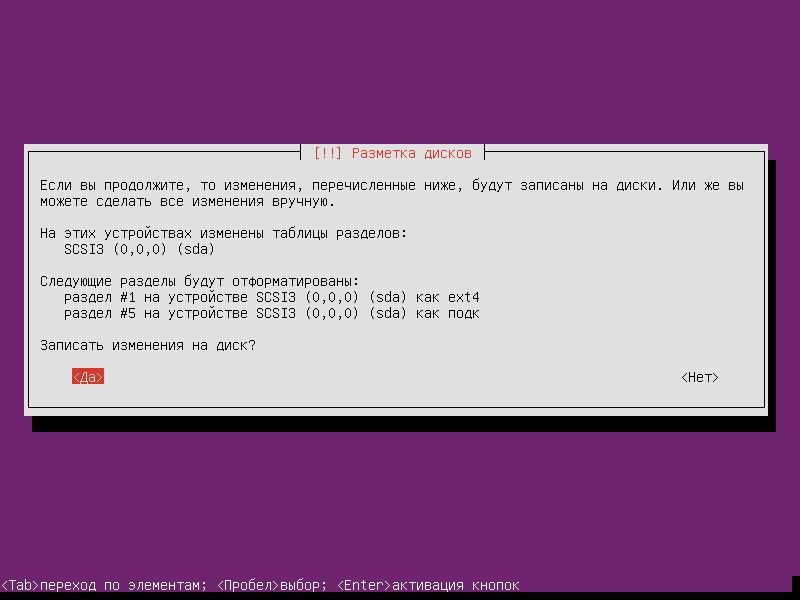
- We do not have a proxy, leave the field empty and continue.

- Let the system itself install security updates.
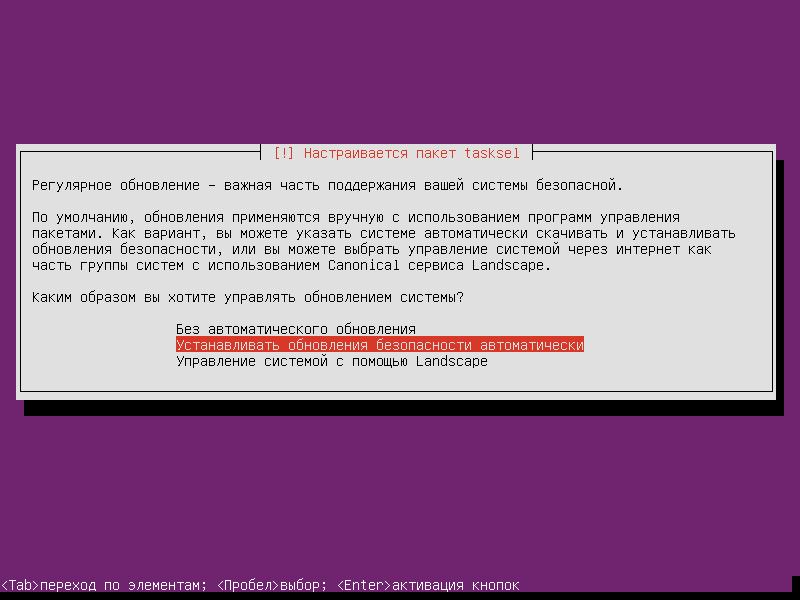
- We select the set of programs that will be installed with the system.
The standard set and OpenSSH Server will be enough for us.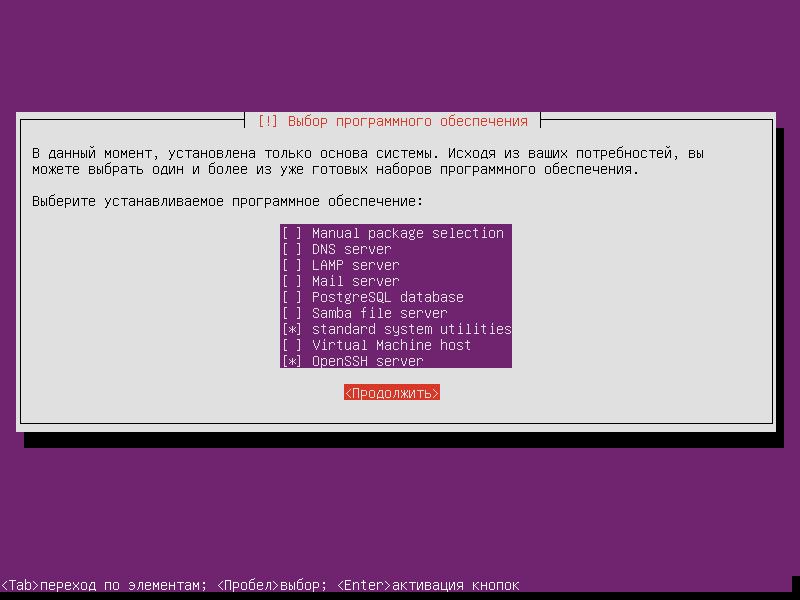
- Set GRUB as the main one.
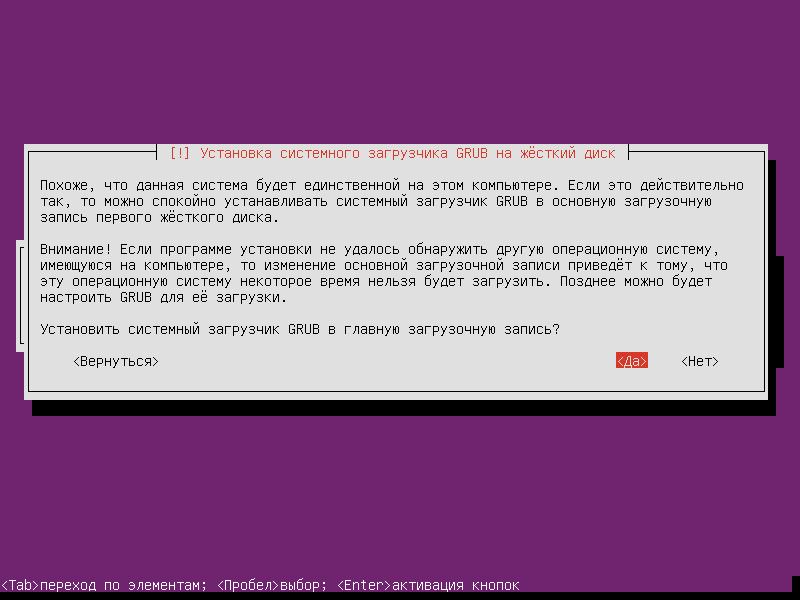
- Great, almost done.
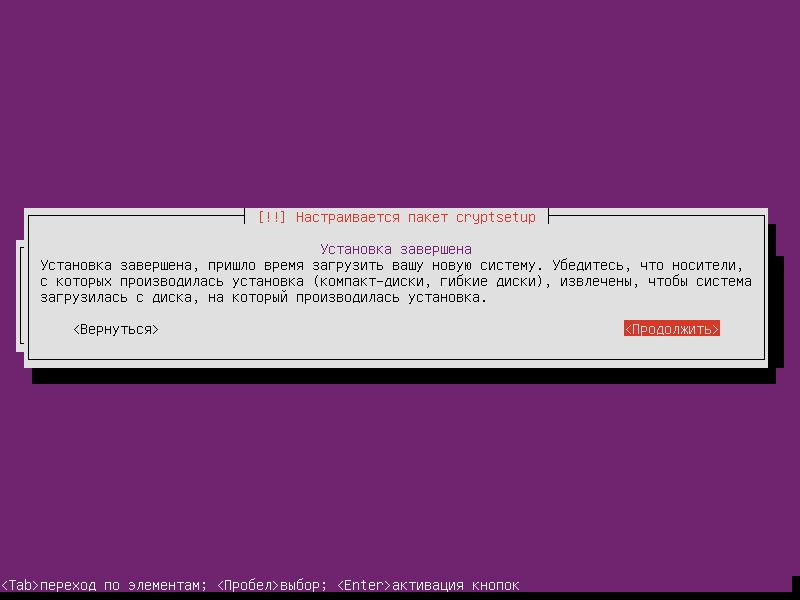
We need to remove the disk from the drive.
Devices -> Optical Discs -> Remove Disk from Drive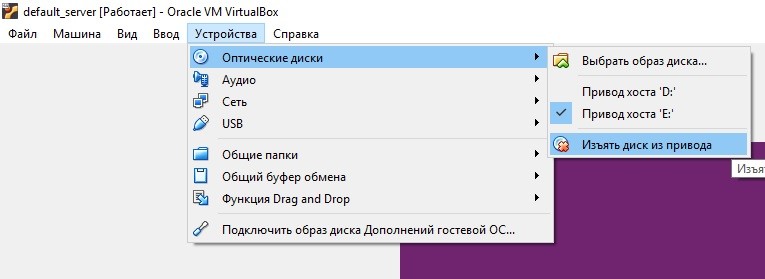
Now click on Continue. - Great, Ubuntu Server is installed.

We enter the login, followed by the password, we get into the system, everything is OK.
Turn off our car:poweroff - Specifically, we will leave this machine alone, and will only use it for cloning.
Clone our car:
Enter a name.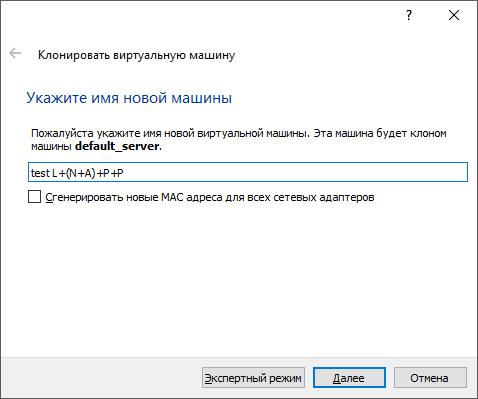
We continue.
We choose full cloning.
Click to clone. My cloning lasted two minutes.
Install PuTTY to access via SSH
- Run the installation file.

- Leave the default settings.
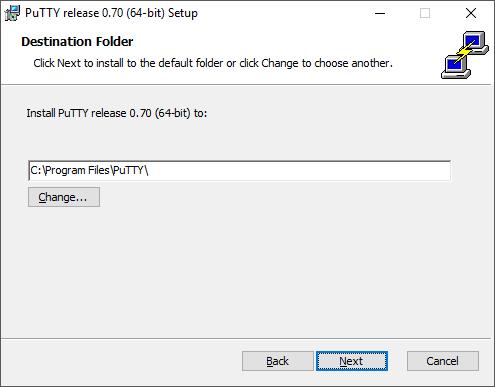
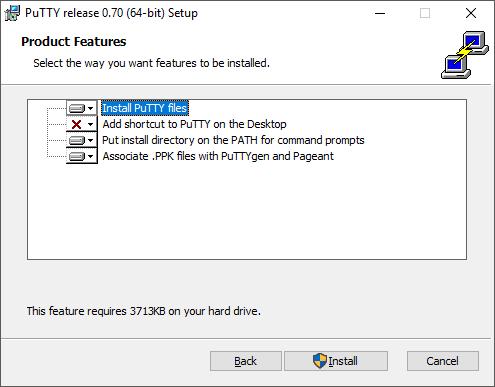
Click "Install." - Finish.

Connection via SSH to the server
- Run a clone of our machine to find out its ip address.
Let's write the command:ifconfig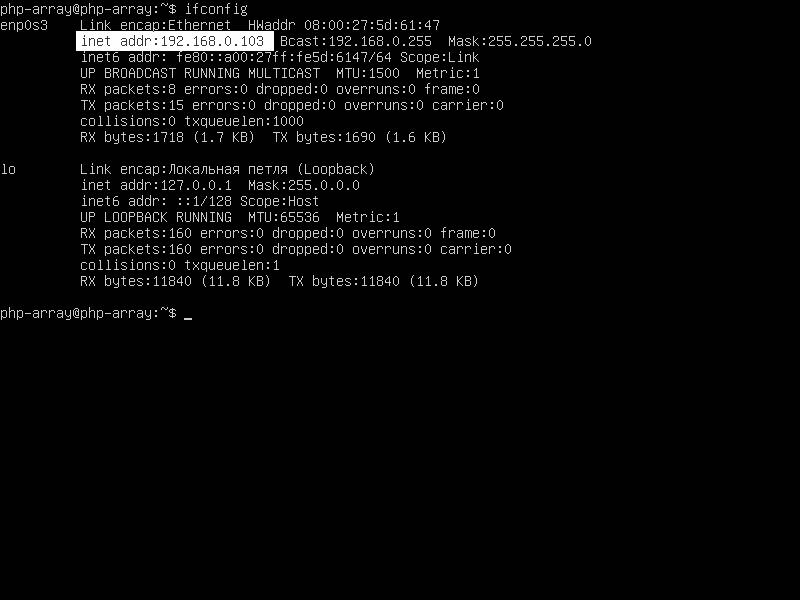
In the screenshot, I marked the place where your ip address will be written. I have it: 192.168.0.103 (it can change while writing an article, it has changed to 192.168.0.101 for me).
Now you can log out of your account by writing:exit - Переходим в PuTTY, вводим ip адрес, и имя для сохраняемой сессии.

Жмем «Save». - Теперь, при двойном клике по имени сохраненной сессии.
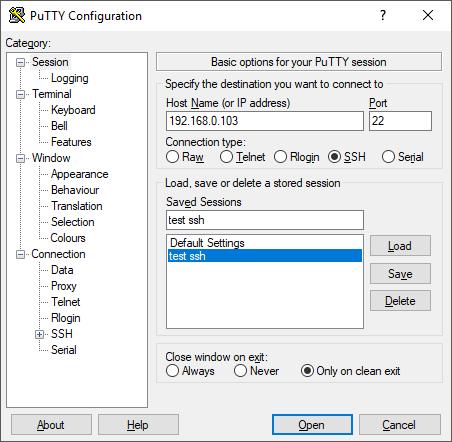
Мы должны наблюдать следующее:
Вводим логин, после пароль.
SSH соединение успешно настроено, теперь можно приступать к настройке (Nginx + Apache) + PostgreSQL + PHP.
Установка и настройка (Nginx + Apache) + PostgreSQL + PHP
Let's go into superuser mode.
sudo suLet's go to the root directory.
cd /Add a PostgreSQL repository.
wget -q https://www.postgresql.org/media/keys/ACCC4CF8.asc -O - | sudo apt-key add -sh -c 'echo "deb http://apt.postgresql.org/pub/repos/apt/ `lsb_release -cs`-pgdg main" >> /etc/apt/sources.list.d/pgdg.list'Add a PHP repository.
add-apt-repository ppa:ondrej/phpMake an update.
apt-get updateMake an upgrade
apt-get upgrade. I upgrade took five minutes.
We will
apt-get install pythoninstall python, we will need it later. Let's proceed with the installation of Apache, PHP and PostgreSQL.
apt-get install apache2 php7.2 php7.2-cli php7.2-curl php7.2-fpm php7.2-pgsql postgresql postgresql-contrib postgresql-server-dev-10 libapache2-mod-rpaf build-essential apache2-devBy default, PostgreSQL does not have single-byte and unsigned numbers, so we will install them.
There is an extension for PostgreSQL, pguint - github.com/petere/pguint
git clone https://github.com/petere/pguint.git /pguintLet's go to the created directory
cd /pguintNow we need to compile this extension (here we will need the python that we installed earlier).
makemake installNow, to the PostgreSQL server, in the desired database, where we want to use unsigned and single-byte numbers, we will send:
CREATE EXTENSION uint;Let's go back to the root directory.
cd /Install Nginx, but before that we stop Apache so that it does not occupy port 80, otherwise Nginx will not install.
service apache2 stopInstalling Nginx
apt-get install nginxGreat, now stop Nginx as well
service nginx stopConfiguring Apache Change the Apache port Replace
a2dismod mpm_event
a2enmod mpm_worker
a2enmod proxy_fcgi
a2enconf php7.2-fpmnano /etc/apache2/ports.confListen 80on the
Listen 127.0.0.1:8080127.0.0.1 - means that Apache can be accessed only at the local address.
8080 - you can put any free port.
Let's go to the folder with available sites.
cd /etc/apache2/sites-availableCreate a configuration file for our sideboard
nano domain-name.local.confand bring it to this form:
ServerName domain-name.local
ServerAlias www.domain-name.local
ServerAdmin admin@domain-name.local
DocumentRoot /var/www/domain-name.local
ErrorLog ${APACHE_LOG_DIR}/domain-name.local_error.log
CustomLog ${APACHE_LOG_DIR}/domain-name.local_access.log vhost_combined
Let's see what we have in / var / www The html folder, we no longer need it, delete it together with the contents Let's create our own folder, with our website Let's go to the folder with our website Let's create the index.pnp document We will write to it:
cd /var/www/
ls -Frm -R htmlmkdir domain-name.local/cd domain-name.local/nano index.phpWe are done with this for now.
Let's go back to the root directory
cd /. Apache has rpaf 0.6 and it does not transmit / receive a port from nginx and does not work correctly, as it should. Therefore, it must be updated. Now we will compile. We leave in the root directory Well, we will continue the Apache setup. Replace
wget -O rpaf_v0.8.4.tar.gz https://github.com/gnif/mod_rpaf/archive/v0.8.4.tar.gz
gunzip rpaf_v0.8.4.tar.gz
tar xvf rpaf_v0.8.4.tar
cd mod_rpaf-0.8.4/make
make installcd /nano /etc/apache2/apache2.confLogFormat "%v:%p %h %l %u %t \"%r\" %>s %O \"%{Referer}i\" \"%{User-Agent}i\"" vhost_combinedon the
LogFormat "%v:%p %{X-Forwarded-For}i %l %u %t \"%r\" %>s %O \"%{Referer}i\" \"%{User-Agent}i\"" vhost_combinedPut in order rpaf.conf
nano /etc/apache2/mods-available/rpaf.confLet's bring it to this form:
RPAF_Enable On
RPAF_ProxyIPs 127.0.0.1 ::1
RPAF_SetHostName On
RPAF_SetHTTPS On
RPAF_SetPort On
RPAF_ForbidIfNotProxy Off
RPAF_Header X-Forwarded-For
We will enable our site in Apache.
a2ensite domain-name.local.confAnd run our Apache.
service apache2 startC Apache finished.
Configure Nginx
nano /etc/nginx/sites-available/domain-name.localBring it to this view:
server {
listen 80;
listen [::]:80;
root /var/www/domain-name.local;
index index.php index.html index.htm;
server_name domain-name.local www.domain-name.local;
location / {
proxy_pass http://127.0.0.1:8080;
proxy_redirect off;
proxy_set_header Host $host;
proxy_set_header X-Real-IP $remote_addr;
proxy_set_header X-Forwarded-For $proxy_add_x_forwarded_for;
proxy_set_header X-Forwarded-Proto $scheme;
proxy_pass_header Set-Cookie;
}
location ~ /\.ht {
deny all;
}
location ~* \.(ico|docx|doc|xls|xlsx|rar|zip|jpg|jpeg|txt|xml|pdf|gif|png|css|js|html)$ {
root /var/www/domain-name.local;
}
add_header Strict-Transport-Security "max-age=63072000; includeSubDomains; preload";
add_header Content-Security-Policy "block-all-mixed-content";
add_header X-Frame-Options "SAMEORIGIN";
add_header X-XSS-Protection "1; mode=block";
add_header X-Content-Type-Options "nosniff";
resolver 8.8.8.8;
}Now create a symbolic link to this file.
ln -s /etc/nginx/sites-available/domain-name.local /etc/nginx/sites-enabled/domain-name.localEdit / etc / nginx / sites-available / default.
nano /etc/nginx/sites-available/defaultRemove the default_server.
And insert the redirection from www. and ip
server {
listen 80;
listen [::]:80;
server_name www.domain-name.local;
return 301 http://domain-name.local$request_uri;
}
server {
listen 80;
listen [::]:80;
server_name 192.168.0.101;
return 301 http://domain-name.local$request_uri;
}We start Nginx.
service nginx startGreat, we can check how it works.
But before that, edit the host file C: \ Windows \ System32 \ drivers \ etc
Open the hosts file through a text editor, and insert at the very bottom: Replace ip and domain with your own. In the browser, we ’ll go to domain-name.local , and if you did everything according to this recipe, we should see a page with phpinfo. Well, the matter is left to the small. Set up PostgreSQL. Create a new PostgreSQL user. Log in to the DBMS and change the password for the new user. Now the new user needs to change the connection type, for this we need to find the pg_hba.conf file. We write
192.168.0.101 domain-name.local
192.168.0.101 www.domain-name.localsudo -u postgres createuser --superuser test-usersudo -u postgres psql\password test-userSHOW hba_file;
We leave the DBMS
\qand start editing /etc/postgresql/10/main/pg_hba.conf
nano /etc/postgresql/10/main/pg_hba.confWe are looking for
# Database administrative login by Unix domain socketFind the following: We will look like this: Restart PostgreSQL Now we will enter the DBMS through a new user Enter the password and go to the DBMS. Create a test database
# Database administrative login by Unix domain socket
local all postgres peer# Database administrative login by Unix domain socket
local all postgres peer
local all test-user md5service postgresql restartpsql test-user -h 127.0.0.1 -d postgresCREATE DATABASE test_db;And immediately go into it.
\c test_dbConnect the pguint extension
CREATE EXTENSION uint;And create a test pattern
CREATE TABLE test_tb(
id uint4 PRIMARY KEY,
title TEXT
);Fill the table with test data
INSERT INTO test_tb(id, title) VALUES (1, 'Бла бла бла 1'), (2, 'Бла бла бла 2'), (3, 'Бла бла бла 3'), (4, 'Бла бла бла 4'), (5, 'Бла бла бла 5'), (6, 'Бла бла бла 6'), (7, 'Бла бла бла 7'), (8, 'Бла бла бла 8'), (9, 'Бла бла бла 9'), (10, 'Бла бла бла 10'), (2147483642, 'Бла бла бла 2147483642'), (2147483643, 'Бла бла бла 2147483643'), (2147483644, 'Бла бла бла 2147483644'), (2147483645, 'Бла бла бла 2147483645'), (2147483646, 'Бла бла бла 2147483646'), (2147483647, 'Бла бла бла 2147483647'), (2147483648, 'Бла бла бла 2147483648'), (2147483649, 'Бла бла бла 2147483649'), (2147483650, 'Бла бла бла 2147483650'), (2147483651, 'Бла бла бла 2147483651'), (2147483652, 'Бла бла бла 2147483652'), (4294967286, 'Бла бла бла 4294967286'), (4294967287, 'Бла бла бла 4294967287'), (4294967288, 'Бла бла бла 4294967288'), (4294967289, 'Бла бла бла 4294967289'), (4294967290, 'Бла бла бла 4294967290'), (4294967291, 'Бла бла бла 4294967291'), (4294967292, 'Бла бла бла 4294967292'), (4294967293, 'Бла бла бла 4294967293'), (4294967294, 'Бла бла бла 4294967294'), (4294967295, 'Бла бла бла 4294967295') RETURNING id, title;Let's see the contents of the test_tb table
SELECT * FROM test_tb;Now let's try to get this data out of php.
Close the connection to the DBMS
\qOpen /var/www/domain-name.local/index.php
nano /var/www/domain-name.local/index.phpAnd bring it to the following form:
prepare('SELECT * FROM test_tb;');
$test->execute();
echo "";
print_r($test->fetchAll(PDO::FETCH_ASSOC));
echo "
";
?>Now let's check and make sure that it works.

Great, we have configured (Nginx + Apache) + PostgreSQL + PHP and it works properly.
Configure FTP access to the site
Install the FTP server.
apt-get install vsftpdStop vsftpd before configuration.
service vsftpd stopOpen etc / vsftpd.conf.
nano etc/vsftpd.confInstall / replace / switch the following parameters:
- listen = YES
- listen_ipv6 = NO
- local_enable = YES
- write_enable = YES
- chroot_local_user = YES
- pam_service_name = ftp
Создадим нового пользователя для доступа через FTP
useradd -d /home/domain-name -s /sbin/nologin domain-nameУстановим для него пароль
passwd domain-nameСоздадим домашнюю директорию пользователя
mkdir -p /home/domain-nameУстановим для нее права
chmod a-w /home/domain-nameСоздадим группу для пользователя
groupadd ftpsДобавим пользователя в группу
usermod -G ftps domain-nameПоменяем владельца каталога
chown -R domain-name:ftps /home/domain-nameСоздадим папку нашего сайта
mkdir /home/domain-name/domain-name.localСменим у нее владельца
chown -R domain-name:ftps /home/domain-name/domain-name.localСмонтируем наши каталоги, откроем файл /etc/fstab
nano /etc/fstabВ самый низ вставим
/var/www/domain-name.local /home/domain-name/domain-name.local none bind 0 0Добавим владельца /var/www/domain-name.local
chown www-data:domain-name /var/www/domain-name.local/ -RНазначим права
find /var/www/domain-name.local -type d -exec chmod 775 {} \;
find /var/www/domain-name.local -type f -exec chmod 664 {} \;И запустим vsftpd
service vsftpd startПроверим, я буду использовать FileZilla.

Все хорошо, попробуем создать каталог.

Работает.
Настроим защищенное FTP соединение.
Остановим vsftpd
service vsftpd stopСгенерируем сертификат
openssl req -x509 -nodes -days 720 -newkey rsa:2048 -keyout /etc/ssl/private/vsftpd.key -out /etc/ssl/private/vsftpd.pemHere we introduce everything that your soul wants
Country Name (2 letter code) [AU]:
State or Province Name (full name) [Some-State]:
Locality Name (eg, city) []:
Organization Name (eg, company) [Internet Widgits Pty Ltd]:
Organizational Unit Name (eg, section) []:
Common Name (eg server FQDN or YOUR name) []:
Email Address []:
Open etc / vsftpd.conf
nano etc/vsftpd.confInstall / add the following parameters:
- ssl_enable = YES
- ssl_tlsv1 = YES
- ssl_sslv2 = NO
- ssl_sslv3 = NO
- rsa_cert_file = / etc / ssl / private / vsftpd.pem
- rsa_private_key_file = / etc / ssl / private / vsftpd.key
- allow_anon_ssl = NO
- force_local_data_ssl = YES
- force_local_logins_ssl = YES
- ssl_ciphers = HIGH
Save and run vsftpd
service vsftpd startLet's try

ur, everything works, you can start developing a web application.
PS This recipe does not claim to be the only correct and ideal. If you missed something or you have suggestions for supplementing this recipe, welcome to comments, I will accept any criticism. As my skills grow, this recipe will be supplemented and modified.
